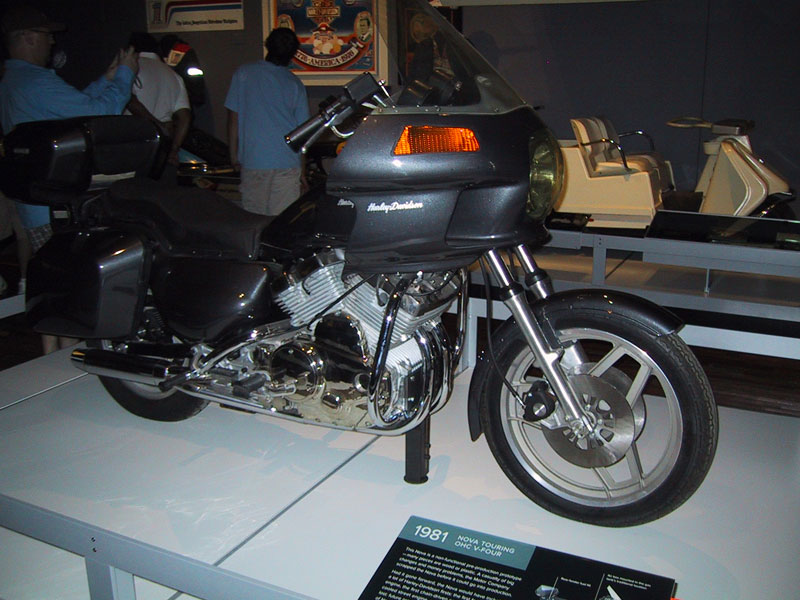And a touring model
Those look an awful lot like scoops to me....six years before the vmax hit dealers.
"The radiator lies almost horizontally, with two large forward-facing scoops protruding forward from what normally would be the fuel tank, funneling air into a plenum chamber above the radiator. A fan under the radiator pulls air through it, down and rearward, away from the rider and passenger. What began as a styling imperative offered inherent advantages. The air intake is mounted well above ground level, preventing debris from being sucked into the radiator. Because the airflow is channeled and controlled, a smaller radiator can be used with greater efficiency. And almost as important at the time, the "invisible" radiator kept Willie G. and his stylists happy. "
The bike sounded very interesting, and if it had been released, may have drastically changed motorcycle history. Imagine if Yamaha and Honda released V4's to
compete against a Harley that had done it first? Imagine Harley
leading the way in performance and innovation? Honestly the MC world could be a total 180* from what it is.
But in the end, when it came down to pursuing the Nova against "rework what we know sells", it was the latter. Innovate or stagnate, and stagnate won. 40 years later and they've still got the same philosophy.
I don't doubt that Honda and Yamaha were aware of this scrapped project. Honda thought that HD was onto something and there was a gap in the market....a high performance standard/cruiser. Once they heard the Nova was "dead" in the early 80's....a year or two later the V65 magna came out. Honda saw that HD dropped the ball so they snatched it right back up again. And the V65 sold like hotcakes and marked the start of the musclebike era.





